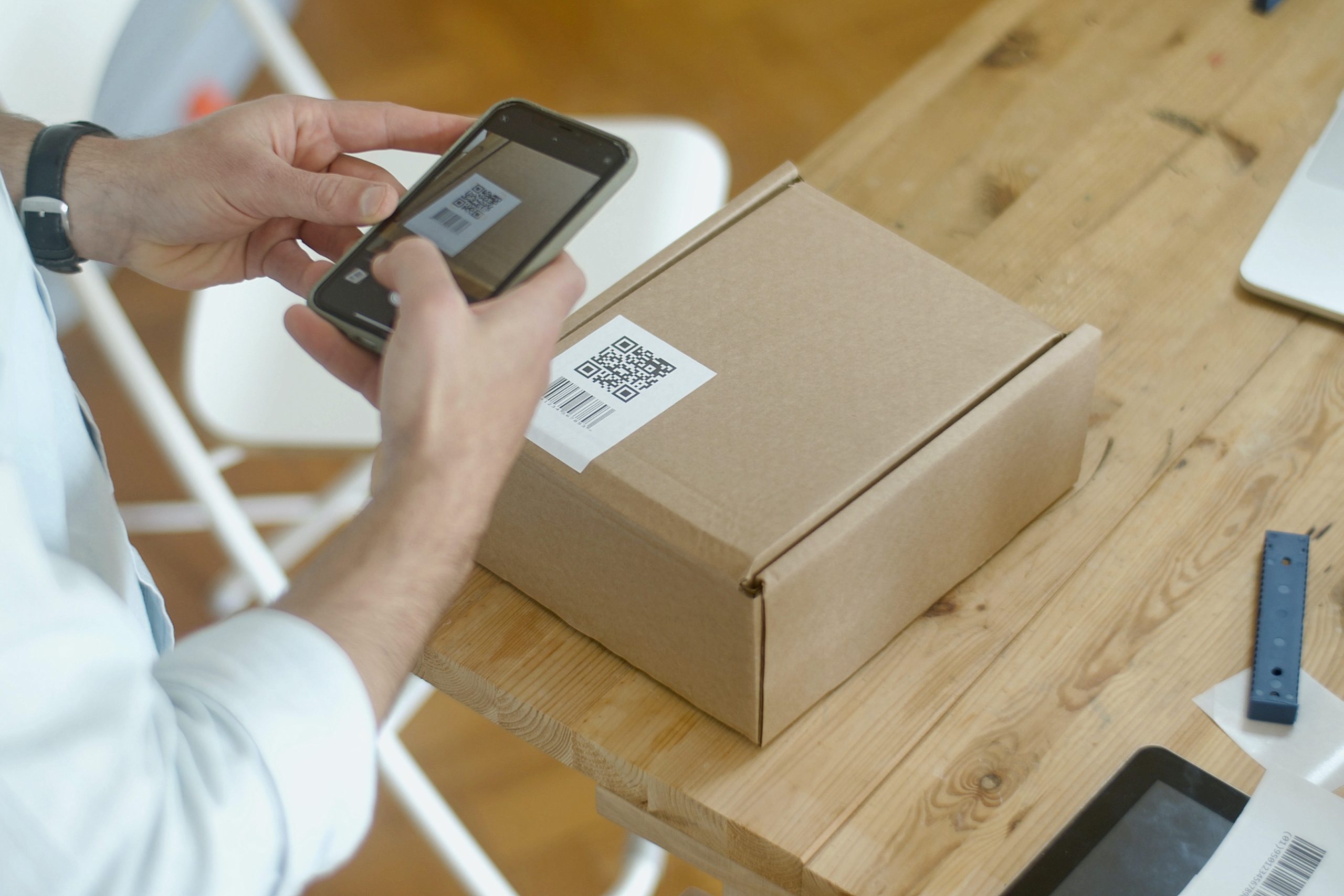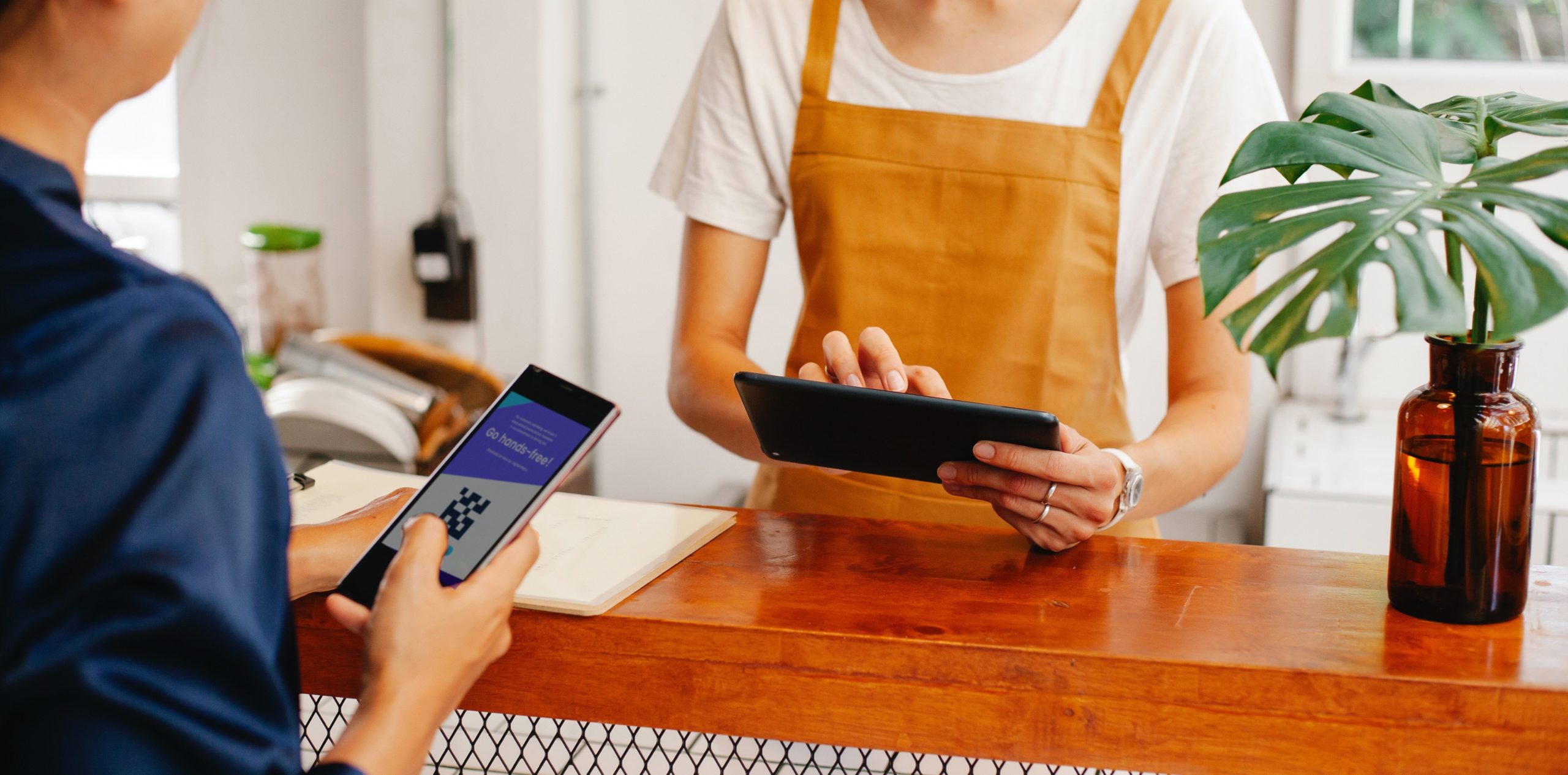QR codes: a renewed link between the physical and digital worlds
The quintessential digital code has been given a second lease of life as a result of the pandemic, with its use now widespread in hospitality and fintech. This is because the technology has multiple applications and is simple to use, immediate and universal.
Reading a restaurant’s menu, returning an item of clothing or paying in a shop all used to involve material items that were passed from hand to hand. However, the arrival of the pandemic reduced the use of printed tickets, receipts and menus – QR codes took over.
‘Quick Response’ technology uses a 2D pattern to encode alphanumeric information, allowing users to access it conveniently and easily using a smartphone. It can be used for a huge variety of applications – contact tracing, data storage, inventory management, security, cashless payments, teaching uses and Covid certificates.

A funeral company has even started to put them on tombstones as an innovative way to honour the deceased. They are including QA codes with inscriptions so that visitors to the cemetery can scan them and be reminded of or find out about that person through a compilation of photographs, videos and music.
Although it has been in the context of the pandemic that they have become ubiquitous, QR codes were invented decades ago in Japan and from 2010 onwards their use spread across the United States and Europe. We take a look at their origins, how they can be used in fintech, and some possible risks associated with them.
One scan, 200 times more information
It all began in the 1990s when an engineer at a Japanese Toyota subsidiary, Masahiro Hará, realised that they needed a more efficient way of managing the parts for their vehicles, because they were using seven or eight bar codes for each box. Taking inspiration from iGo, a Japanese strategy board game using black and white pieces, Hará came up with a method for accessing a large volume of data through a single scan. Nowadays, the code he invented is capable of storing 200 times more information than a traditional bar code.
These QR codes are dynamic, allowing you to modify the information that they contain without changing the image, and they are customisable, as they make it possible to change the colour or include the logo of a particular company in the centre. Another of their more interesting features is that they allow for statistical monitoring, for example finding out how many people have scanned them.

Opportunities for fintech
Digitisation has brought convenience, security and ubiquity to the world of fintech. Spanish payment service provider Bizum, which provides instant banking transfers, is a clear example of how technology solves everyday needs.
Thanks to QR codes and via the Spanish State Lotteries and Betting Authorities (SELAE), this platform has found another way to bring value to its customers. In order to make betting payments and receive their winnings, users simply generate a Bizum QR in their banking app, which will allow them to identify themselves when the transaction begins. “It’s about providing the service with agility, but with the same security that a card provides”, explains Bizum’s Business Development Director, Fernando Rodríguez Ferrer. The key is that the code is unique per operation and expires within minutes of activation. “Even if you take a screen shot, it won’t work once that time has passed”, he says.
Once its use has been validated, his idea is to take it to other fields and “explore other avenues”. Rodríguez believes it is interesting that it is the merchants themselves who generate this code when they want to make a payment. “It’s something that could enrich the financial sector, increasing what banks can offer and opting for an omni-channel solution”, he concludes.
BBVA is one of the entities that has launched this functionality to simplify the payment and collection of lotteries and bets using a QR code. Although according to the bank’s spokesperson for payments, Jorge Moreno López, this won’t be the only use of this technology in the banking sector. “As long as their use makes sense and adds value to the client, they will be included in different payment services” Moreno clarifies.
Today, it has already been included in some Latin American subsidiaries. For example, he explains that users of the BBVA Argentina app can pay with QR codes thanks to the MODO system, and that in Mexico they have launched Aqua cards with neither PAN nor CVV, where customers have to scan a code when activating their passwords. In fact, BBVA recently received an award at the El Ojo International Festival for its campaign in Spain to raise awareness of these cards.
In terms of payments, they can be implemented in different ways. Businesses can opt for displaying a QR code for customers to scan, for instance, or it could be the user who generates one for the establishment to then verify.
Reinforcing brand loyalty
Cheerfy is a startup that is using digitisation and QR codes to reinvent the diner experience in hospitality. It is a loyalty tool that facilitates direct contact between restaurants and their customers.

“Our goal is to bring the perfection of the online experience to the physical environment. This code acts as a transition point between the two worlds”, explains CEO Carlos Gómez Vendrell. It allows customers to read the menu and pay for their food, splitting the total flexibly between diners, without having to wait for a waiter to bring the bill. In addition, users can get a loyalty card and save it in Apple Wallet or Google Pay, earning points on it every time they pay, thereby strengthening their ties with the brand.
“QR codes will be with us for years, coexisting with other technologies that also have merits”, notes Gómez. The expert says that their success is down to the combination of a “re-educated society”, which is already familiar with turning a physical experience into a digital one, and a universal technology, since all smartphones have a reader for this code.
Preventing cyber risks
QR codes are quite safe, although there is a small possibility that they could be used to distribute malware. Cyber criminals have also reinvented themselves during the pandemic and it may happen that they paste a malicious QR code over an existing one, in order to obtain customers’ personal data. “However, QRs involve no more or less risk than opening a website – I don’t see incremental insecurity beyond the inherent risks of the technology,” says Gómez.
For his part, BBVA’s payments spokesperson Jorge Moreno López offers advice to avoid this situation. It is not advisable to “go mad reading QR codes” or scan those that are of dubious origin. He insists that users should be suspicious if the page to which the code redirects them asks for sensitive information that the bank would never request in other online environments, such as a PIN code. “A bank will always incorporate security measures and elements that identify customers to guarantee payment security”, he states.
QR codes have become a great tool to avoid physical contact and comply with the measures required by the health crisis. By offering a better user experience, facilitating interaction with brands and the gathering of information to offer more personalised services, they will continue to have a place in the post-pandemic world, especially in hospitality, shopping and fintech.



